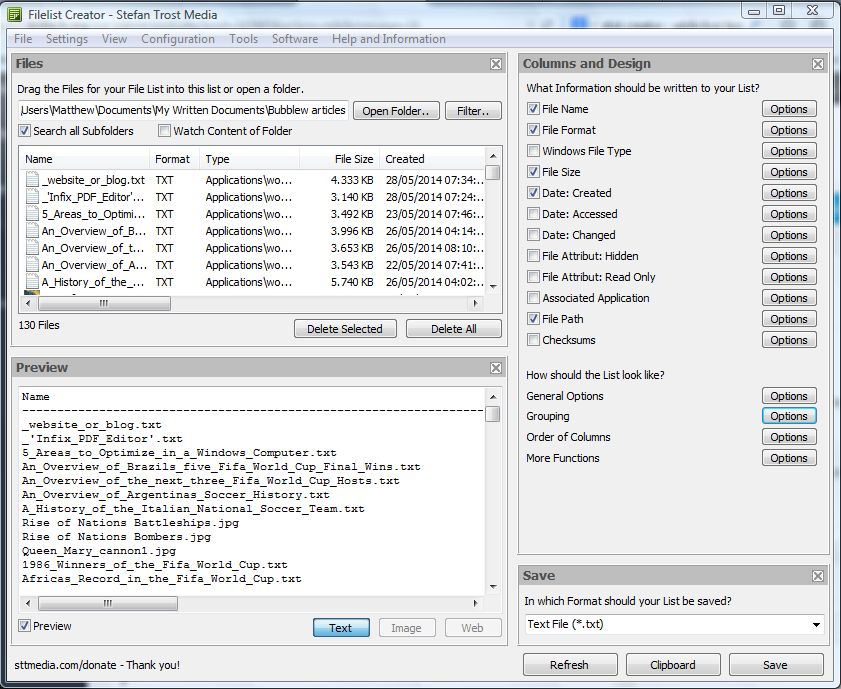

Even when you save your list, all standard Unicode formats and the ANSI format are supported.

This means that you can easily create lists of files containing Unicode characters, and you can use Unicode in all settings, such as in the headings of columns. In addition to general file and folder properties like name, format, type, size, path, path length, folder level, or number of files, there are also specific properties of audio files (artist, title, album, track number, duration or genre), video files (such as width, height, duration, or FPS), images (width, height, color depth, resolution) or text files (encoding, BOM, line break type, number of lines/characters) can be listed just by checking the corresponding option in the columns list.įilelistCreator is fully compatible with Unicode.

You have the option to determine which files/folders should be included and export format selection.įilelistCreator includes many optional settings like allowing you to determine which columns are used in which form in the table you can specify how the design should look and beyond, you can adjust the output as you need it: as XLSX or ODS spreadsheet for Microsoft Excel or OpenOffice, as HTML website, as an image, a CSV file, or, of course, as plain text. You can now quit Terminal and eject the volume.FilelistCreator allows you to create content-based lists for user-defined directories.įiles or folders can be dragged n' dropped into Fileslist Creator, or you can add them via the add files or search folders buttons.


 0 kommentar(er)
0 kommentar(er)
